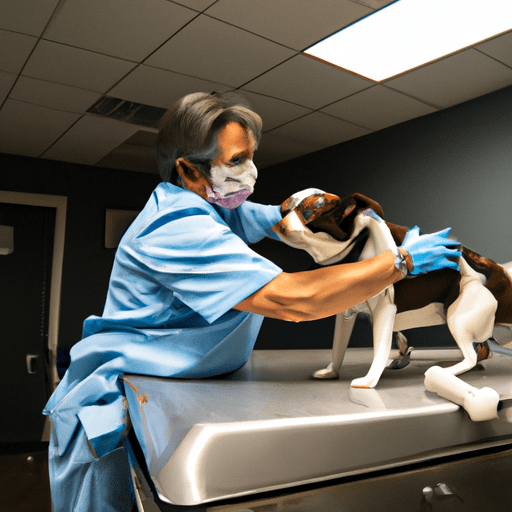As a caregiver, your role involves taking care of a variety of needs, some of which can be quite challenging. One of those tasks may involve releasing your dog’s anal glands. Don’t worry! This guide will walk you through the process with patience, understanding, and a bit of humor.
Understanding Why This Procedure Is Necessary
First, it’s crucial to grasp why you might need to perform this procedure. Dogs have small glands located on either side of their anus. These glands fill up with a fluid that’s normally expressed when your dog defecates. However, sometimes these glands can get blocked, causing discomfort for your dog. You may notice your dog scooting across the floor, licking their behind excessively, or showing signs of discomfort when sitting.
Recognizing When It’s Time to Express the Glands
Before you consider expressing your dog’s anal glands, it’s important to look for the following signs:
- Scooting on the floor
- Excessive licking or biting at the rear
- A strong, fishy odor
- Swelling or redness around the anus
- Difficulty sitting or standing
If you notice these signs, it might be time to consider expressing your dog’s anal glands.
Preparing for the Procedure
To prepare for this task, you’ll need a few supplies:
- Latex gloves
- A damp cloth or baby wipes
- A towel or blanket to comfort your dog
- Dog-safe lubricant, if necessary
Prepare a clean, comfortable space where you can perform the procedure. Spread the towel or blanket out on the floor, and have your supplies readily available.
Conducting the Procedure
Here’s how to conduct the procedure:
- Put on your gloves.
- Position your dog so that they’re standing with their rear facing you.
- Lift the tail gently and locate the glands. They’re typically situated at about 4 and 8 o’clock relative to the anus.
- Using your thumb and forefinger, apply gentle pressure to the glands.
- If necessary, use a lubricant to assist with the process.
- Wipe away any released fluid with a damp cloth or baby wipe.
Remember, the goal is to alleviate discomfort for your dog, not to cause it. If your dog seems excessively distressed or if you’re unable to express the glands, consult a professional.
Aftercare and Prevention
After the procedure, you may want to reward your dog with a treat or some affection for their patience. Monitor your dog for any signs of ongoing discomfort or infection, and consult a vet if necessary.
To prevent future issues, add fiber to your dog’s diet to help naturally express the glands. Regular exercise can also help.
| Prevention Method | Description |
|---|---|
| Fiber-rich diet | Helps bulk up the stool and naturally express the glands |
| Regular exercise | Keeps your dog healthy and helps with bowel movements |
Frequently Asked Questions
Q: How often should I express my dog’s anal glands?
A: This varies depending on the dog. Some dogs may never need their glands expressed, while others may need it monthly.
Q: Can I harm my dog by expressing their anal glands?
A: If done incorrectly, it could cause discomfort or injury. If you’re unsure, consult a professional.
Q: Should I consult a vet before doing this?
A: It’s always a good idea to consult with a vet if you’re unsure about any health-related procedure for your dog.
Q: What if the glands don’t express?
A: If you’re unable to express the glands, consult a professional. It could be a sign of an infection or other medical issue.
Remember, as a caregiver, it’s not just about doing the task—it’s about doing it with care and compassion.



